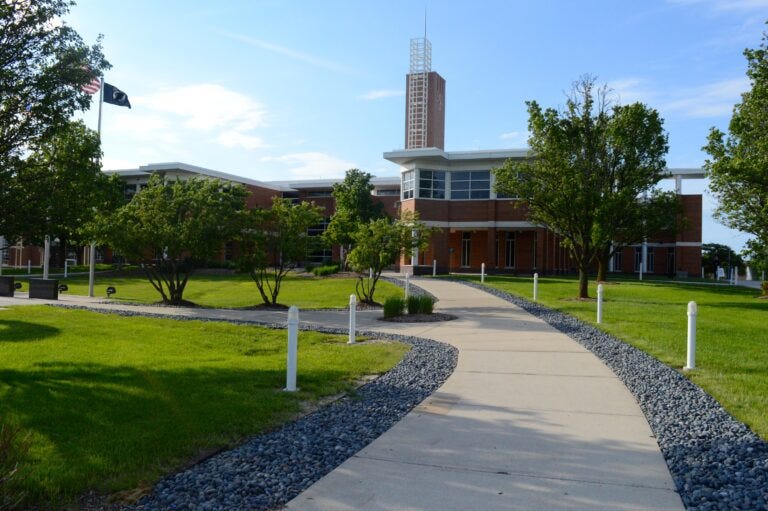Orland Park officials discuss future of Boley Farm

By JON DEPAOLIS, Publisher
ORLAND PARK, Ill. — The Village of Orland Park is set to make substantial changes at the Glenn B. Boley Farm it purchased two decades ago.
The Village Board of Trustees discussed the potential demolition and rehabilitation of certain structures at the farm Tuesday, July 6, during the Committee of the Whole meeting. Ultimately, the board members voted 7-0 to forward on a recommendation for approval of a plan that would roughly cost $543,000 to stabilize the ground barn, silo, milk house and granary buildings on the site. It also would remove the farmhouse, threshing barn, hog house and garage but maintain their foundations; and remove the wash house, privy, grain dryer enclosure, chicken coop and machine shed.
Orland Park Director of Development Services Ed Lelo told the board members that the 5.8 acres of Boley Farm that was acquired by the Village in 2001 was done so using funds from a bond referendum solely for open lands acquisition, restoration, and maintenance. The site, located at 8041 W. 151st St., was purchased for $560,000. Then, in 2008, the farm was added to the local register of historic places as a local landmark.
“Beginning in 2020, there were some concerns on the property as to the safety of some of the structures onsite, which included budget funding for the demolition of some of those structures but not those that were utilized for Hank’s Farm Stand,” Lelo said. “In 2021, the Village contracted with McGuire, Igleski and Associates to conduct a historic assessment and feasibility study.”
Lelo said a public hearing was held in late June about the possible demolition and rehabilitation of the structures on the farm. From there, the Plan Commission sent a recommendation onto the Village Board.
He said that the board members needed to consider the following: if the buildings are structurally sound; if the property can yield a reasonable return if they were retained; if the cost of repair exceeds the value of the land; and if a historic landmark survey has been conducted and documented per the Village’s Land Development Code.
Lelo also presented several scenarios, all with different cost estimates, on what could be done at the farm.
Scenario 1 would save and stabilize the structures at a cost of $1.32 million. As part of this plan, the Village would stabilize the farmhouse, wash house, threshing barn, ground barn, silo, milk house, granary, hog house and chicken coop. The Village would remove the privy, grain dryer enclosure, garage and machine shed.
Staff also presented alternative options for Scenario 2, such as rehabbing certain buildings, removing some, and maintaining the foundations of others. Lelo said the scenarios provide a range of options for “us to retain certain aspects of the historic structures.”
He also noted that the cost estimates only were for the exterior changes.
“The building interiors were not investigated for bringing things to a certain standard or potential future uses,” he said. “Without a clear direction on what the site would be used for, it’s difficult to program. It’s also difficult to estimate those costs at this point.”
Trustee Sean Kampas said he felt the $1.32 million price tag was likely on the low end, and that “was a lot for me to swallow.” He also said there was no master plan created for Boley Farm.
“Boley Farm has suffered from a lack of planning and consideration for upkeep,” Kampas said. “I believe previous administrations had good intentions in acquiring the property, but they failed to maintain it. We’re now looking at needing pounds of cure for what might have been ounces of prevention in the past.”
Mayor Keith Pekau also took issue with the way the farm was handled the past 20 years. He said the Village purchased the farm with a $20 million bond that was approved by a narrow referendum margin that was supposed to be used “for purchasing, restoring and maintaining.”
“We went on a $20 million buying land spree,” Pekau said.
He also said the Village is already saving similar structures at other locations.
“We were a farming community, but how many farms do we need to continue to save?” he asked. “It’s still going to look like a farm, but do we need to save every building there?”
Pekau added that the board would no longer “kick the can down the road.”
“We are stuck with what is left here,” he said. “What I’m not going to do, no matter how many people come and complain … I’m not going to spend $2 million or $3 million of taxpayer money. I think that money is better given to our police department. It’s better given to our other parks.
“We have to deal with the here and now and what the situation is today. I think the board has made a good decision here, which is that we are keeping it a farm, and we are keeping it open land. It does not make sense to try and save every single building on that farm.”
The board members voted 7-0 to recommend the approval of Scenario B. The item will be voted on officially at a future Village Board meeting.


